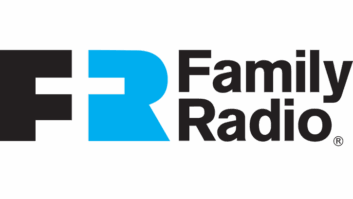Telephone calls have long played an important role in radio programming. They give the medium a sense of immediacy and excitement, mainly because they can be generated and added in to a show very quickly.
I can’t say they’re unique to radio. Still, I don’t think there’s any other media that gets more out of live phone calls.
It’s always best to play to a strength; and for this reason, the ability to air live phone calls, or alternatively to record and play them back later. is a very important feature in a radio studio. This isnt something you’ll see with pure-play streaming services or social media, so radio needs to keep doing it well. Let’s take a look at some telephone interface products.
AEQ is a European broadcast equipment manufacturer that has been making on-air telephone systems for over 20 years. Their third generation system, Systel, is a multi-line, multiple studio system that can make direct use of SIP trunks in addition to lines brought in from the PSTN.
A Systel phone system can be based on either the IP4 or the IP12. IP4 is a single RU device that accommodates up to four SIP trunks and includes three audio inputs, three audio outputs and a provision for the telephone set. IP12 is a two RU device, with 12 audio inputs and outputs, that shares up to 12 SIP trunks with up to four studios through simple analog or digital cabling. Both IP4 and IP12 are compatible with Asterisk PBX. Encryption algorithms include G.711, G.722, G.726 and G.729. As such, the IP4 and IP12 are N/ACIP-compatible.
The telephone is used to respond to calls in conjunction with Web browser that can be operated from any PC. AEQ has also created a customizable user interface for iPads and tablets. Multiple control locations can be configured to allow talent, engineers, and producers access to the system functions. Systel can also be configured so that certain incoming trunks show up on specific outputs (and thus console faders). Caller audio levels can be configured to be adjusted via the user-interface, or with reliance on console faders.
Like the other VoIP phone systems we’ll cover, Systel can access PSTN lines via an FXO gateway. This is a device that terminates POTS, ISDN or ISDN PRI circuits, and converts them to SIP trunks for use by the VoIP system. Some examples of manufacturers are Cisco, Linksys and Grandstream. Naturally you�ll want to use the FXO gateway recommended by whatever VoIP phone system manufacturer you chose.
Comrex is perhaps best known for its AoIP codec line, but they’ve been in the business of telephone interfacing for broadcast for many years. Comrex has a line of telephone hybrids in addition to STAC and STAC VIP, their on-air phone systems. STAC VIP is their latest on-air telephone interface system that can take calls from traditional POTS lines, HD Voice-capable telephones and smartphone apps, as well as those from a local PBX.
VoIP calls utilize Session Initiation Protocol to establish a connection between two callers, and SIP also negotiates which audio codec will be used for the call. When a call is placed to STAC VIP from a VoIP telephone, soft codec or even a smartphone with a SIP app, STAC VIP will negotiate to find the highest quality codec supported by the caller’s phone. The VoIP calls don’t require that much bandwidth; STAC VIP can process up to 12 incoming VoIP calls on a single DSL line utilizing telephone grade G.729 audio compression.
STAC VIP accommodates POTS lines by use of VoIP Gateway devices (also known as an FXO gateway) which are commercially available from several manufacturers. In this fashion, existing POTS/PSTN, ISDN and T1/E1 telephone lines to be converted to a SIP compatible VoIP trunk for connection to the STAC VIP Mainframe.
Numerous broadcast facilities depend on IP-based PBX systems to deliver telephone calls throughout their offices. STAC VIP accommodates extension sharing and integration with SIP-based PBX systems.
STAC IP is an integrated call screening and control interface that runs natively on STAC VIP. Using a Web browser, the password-protected graphical user interface provides basic call screening functionality, such as caller name, location and notes, and caller ID information when available.
STAC VIP utilizes the same STAC control surface which provides indication of phone line and caller status by way colored LEDs and button layout. Two features worth noting are ‘Busy All Lines’ and control of the ‘Auto Attendant’ feature, which answers calls and plays out a custom message before parking calls on hold. STAC CS connects to the mainframe via IP, so it can be located anywhere IP connectivity is possible.The STAC VIP Mainframe is the central point where all outside calls meet with the STAC VIP’s control, management and audio interface functions. Audio connections include AES audio in and out along with Line 1 and Line 2 in and out on XLR. Two independent Hold Audio inputs are provided, allowing STAC VIP to be shared between studios. Two Ethernet ports provide for WAN connections to all telephone line sources and LAN connections for local STAC VIP Control Surfaces and local interface control. Up to four Control Surfaces can be supported per mainframe.
In addition to STAC and STAC VIP, Comrex also offers a line of stand-alone, single RU hybrids: The DH20 (single hybrid); the DH22 (dual-hybrid); and the DH30, a single-hybrid with additional audio processing features. Each of the three use digital hybrids that continuously adapt to telephone line conditions; each has AGC for caller audio, as well as ducking. Additional audio processing for the DH30 includes acoustic echo cancelling for applications where open speakers and microphones are used, and adjustable compression, downward expansion, three-band equalization and bass boost.
K Audio offers an extensive line of telephone interface equipment for live radio and podcasting applications. Let’s take a look at the Innkeeper line of hybrids: Innkeeper 1X; Innkeeper 2; and Innkeeper 4. They’re all digital hybrids used to interface POTS lines.
The Innkeeper 1X has three balanced audio connections: mic/line switchable XLR input, XLR caller output and an additional, user-defined XLR output. Additionally, it has a front-panel headphone jack, and a rear-apron output meant to drive a monitor speaker directly. It has front panel controls, but it can be remotely controlled in one of two ways: The Guest Module 1 allows remote Call, Drop and DTMF dialing (by way of rear-apron terminal block remote control connections). Alternatively, the optional RIU-IP can be used for control. (This is an accessory for the Innkeeper 1X as well as Innkeeper 2 and Innkeeper 4.) RIU-IP contains a Web server which allows the user to send and receive control data through their Web browser. RIU-IP has an Ethernet connection for access, and uses RS-232 to communicate with the hybrids.
Also included as standard features are AGC; call ducking (by 9 dB when the local host speaks); and an auto-answer function that allows the Innkeeper to work as an IFB coupler in live, remote news gathering applications.
Innkeepers 2 and 4 are single rack unit devices including two and four independent hybrids respectively. Each hybrid has an independent send input, and a “master” send input, that will drive each hybrid input, is included as well. (Line-level only.) Each has front panel controls but are also accessible via RS-232 and/or the RIU-IP for IP access.
The Telos VX is the company’s flagship telephone interface and talk show system. VX connects to traditional POTS and ISDN telephone lines via standard FXO gateways; but, it also connects to VoIP-based PBX systems and SIP Trunking circuits to take advantage of Internet-delivered phone services. VX uses Ethernet as its connection backbone, likely reducing the cost of phone system installation, maintenance and cabling. By way of Ethernet, VX shares phone lines among studios and connects system components. This also makes VX naturally scalable.
VX connects directly to Axia IP-Audio networks, connecting multiple channels of audio and control via a single CAT-5 cable. Optional VX interfaces break out audio into analog and digital formats, along with GPIO logic commands. Some of its other features include:
���� Support for G.722 codec enables high-fidelity phone calls from SIP clients
���� Modular, scalable system can be expanded to manage a network of up to 20 studios, each with a dedicated Program-On-Hold input.
���� System capacity of up to 48 standard phone lines; supports up to 250 SIP numbers.
���� Up to 16 hybrids, with as many as 48 active calls (up to four per hybrid), may be placed on-air concurrently.
���� Using Axia AoIP, multiple phone lines – each with a dedicated hybrid – can automatically map to individual console faders.
���� VX includes analog, AES/EBU and GPIO interfaces. Audio interfaces feature 48 kHz sampling rate and 24-bit A/D converters with 256x oversampling.
���� Dynamic line management enables rapid re-allocation of call-in lines to studios requiring increased capacity.
���� Dynamic EQ, AGC, adjustable caller ducking and send-and-receive-audio dynamics processing by Omnia.
���� Acoustic echo cancellation from Fraunhofer IIS to mitigate open-speaker feedback.
The VSet12 phone controller is an IP-based phone set with two large, high-contrast color LCD panels that provide line status and caller information. (VSet6 and VSet1 are smaller versions.) Calls can be selected, held, and dropped in the way to which operators have grown accustomed. Also included is Broadcast Bionic’s XScreen Lite call-screening software, which will run on any networked PC. An integrated recorder/editor allows for the recording of calls.
In addition to the VX system, Telos also offers the Hx6, a six-line Talk show system. Hx6 works with POTS or ISDN phone lines and comes equipped with two Telos digital hybrids, each with independent AGC, noise gate, and call-ducking dynamics. The hybrids include Telos Digital Dynamic EQ, a multi-band equalizer that analyzes and adjusts caller audio. There’s also echo cancellation and adaptation routines and a pitch shifter that reduce the possibility of feedback when calls are taken in open-speaker situations.
By way of the rear apron Livewire connection, Hx6 puts audio, hybrid control and mix-minus for all six phone lines onto a CAT-5 cable. The Ethernet connection also provides access for remote call-screening applications that run on a producer�s PC. Control is provided by the Telos VSet6 six-line phone controller (sold separately).
If you are simply looking for a POTS hybrid, you could consider the Telos Hx1 or Hx2 (dual-hybrid version). Both are single rack-unit digital hybrids, including the following features:
��� Wide-range AGC and noise gate by Omnia, with adjustable gain settings
��� Pitch shifter help prevent feedback in situations where open speakers are required
��� Adjustable caller override improves performance and allows you to individualize the degree to which the announcer ducks the caller audio
��� Dynamic EQ and adjustable leveler EQ High and EQ Low display meters
�� Separate Send and Receive level meters
�� Auto-Answer with selectable ring count
�� Input/output via analog XLR (input switchable between Mic or Line levels)
Picking up phone calls and placing them on-air live is one thing, but recording them for editing and later playback is another important aspect in the workflow of a typical radio station. Let’s take a look at a couple of systems that are designed just for that.
Broadcast Bionics XScreen runs on a PC and provides a user-interface that gives jocks and call-screeners a convenient way to manage calls (and callers). For starters, there’s a drop-and-drag database of callers, a phonebook and visual warnings of persistent or nuisance callers. An upgrade to the full XScreen client software (from the free version) adds even more features: An extended call history, an enhanced phonebook, prize management, and GPIO functionality.
XScreen is designed to integrate with the two Telos multi-line systems (VX and the Hx6) that were mentioned already; and XScreen, deployed as part of a Livewire network, enables call recording, editing and console integration directly over the network.
Simple application of PhoneBOX Solo PhoneBOX Solo is software from Broadcast Bionics that allows you to use a PC as a call routing system. The PC’s soundcard is used as a dual hybrid, with EQ, dynamics, recording, playback and editing functionality. Two versions are available — up to six or up to 12 lines for a single studio, with the option of adding on up to two further positions (knows as Buddies) for a second studio and producer or call screener. This is a VoIP system, so you’ll need SIP trunks coming in from your provider, or alternatively, you can obtain an FXO gateway to convert circuits from the PSTN to SIP lines. Here are some of the more important features of PhoneBOX solo:
���� Call Log. See who’s called and when, drag and drop numbers back on to a line and call them right back.
���� Number Directory. Store all valuable numbers; drag and drop them on to a line and call out immediately.
���� Caller rating. Classify callers by screening them and scoring them for suitability to a particular show.
���� Call recording. Every call taken on PhoneBOX solo is automatically, and the last five calls are saved. Talent and caller are recorded to different tracks. Use the integrated editor to prep calls for air.
Voxpro control surface, and user-interface VoxPro is a probably the most well-known digital audio recorder and editor for control and news room use. It has many recording and editing capabilities and provides a platform for creating on-air content in a tight timeframe. You likely know that the developer of VoxPro Audion was recently purchased by Wheatstone; but even before this development, VoxPro could be integrated in to the WheatNet-IP audio network environment.
VoxPro5 is the latest version, and it will run on Windows 7, 8 or 8.1 (32- or 64-bit). Recording and editing is done on two tracks. All popular file formats, including M4A (iTunes), MP3, MP2, WAV, AIFF and WMA files can be imported and exported individually or in groups.
An interesting evolution in the design and operation of VoxPro is represented in its networking capabilities. (Long gone are the days of sneakernet.) The networking of VoxPro5 workstations is automatic; two or more computers running VoxPro on the station’s LAN will automatically find each other, swap information and connect, allowing users to access their password-protected accounts from those workstations.
However, you can configure VoxPro to operate in standalone mode, as though there were no other VoxPro workstations on your LAN; or, you can be selective in determining which remote VoxPro workstations will be allowed to share accounts with other computers running VoxPro. In this fashion, clusters of VoxPro workstations belonging to one station can be logically separated from those belonging to a different station while keeping everyone on the same LAN.
An unlimited number of users can access password-protected folders and files within a given user group in addition to the files they personally create. VoxPro users can choose any folder anywhere on the station’s LAN and have VoxPro check that folder every 30 seconds for any incoming media files. If a file is detected it automatically gets sucked-up and into the users current folder. This is a very handy feature for doing remote broadcasts that are not quite in real time.
Phone interactivity remains a very important feature of many shows and podcasts. Getting it right meaning that callers sound intelligible to listeners and jocks, board-ops and show hosts use the equipment correctly and effectively is a big part of broadcast engineer’s job.







